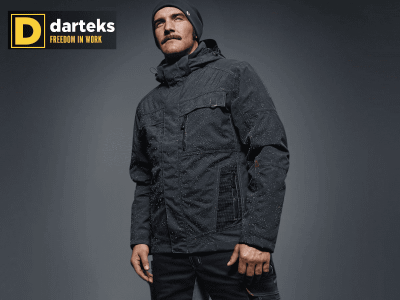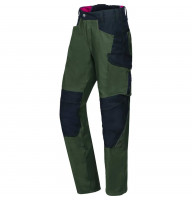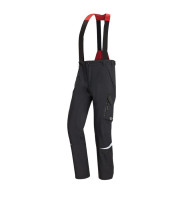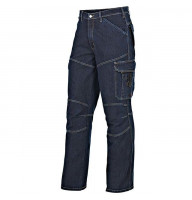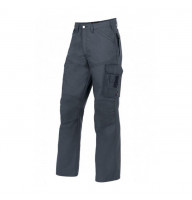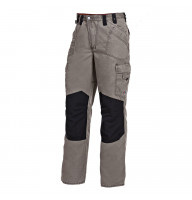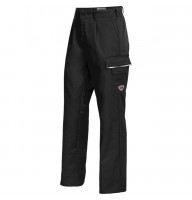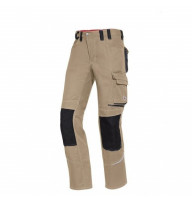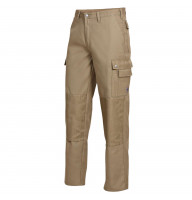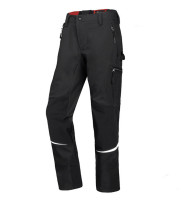0.00€
CheckoutWhy It Is Important to Choose Professional Work Trousers for Workers

Choosing high-quality workwear, especially professional work trousers, is crucial for ensuring safety, comfort, and productivity across various industries. Properly selected trousers provide protection against mechanical damage, weather conditions, and other potential hazards. Additionally, they enhance work efficiency, which is particularly important for construction workers, plumbers, healthcare professionals, mechanics, electricians, and other specialists.
1. Functionality and Convenience of Pockets
Importance of Proper Pocket Placement
Pockets in work trousers are not just a design element but a necessity for efficient work. They allow workers to store tools, small parts, and personal items conveniently. The placement of pockets should align with the job requirements:
-
Front pockets – for quick access to small items.
-
Side pockets on the thighs – for tools or gadgets.
-
Back pockets – for documents, keys, or other accessories.
Types of Pockets for Different Professions
Construction Workers
-
Large, spacious pockets that fit screwdrivers, tape measures, knives.
-
Reinforced material to prevent wear and tear.
Plumbers
-
Additional compartments for wrenches, pliers.
-
Loops for attaching tools.
Healthcare Professionals
-
Minimalistic pockets for quick access to pens, notepads.
-
Closed pockets for protection against contamination.
Mechanics
-
Deep pockets for storing small parts.
-
Magnetic inserts for holding metal objects.
Electricians
-
Insulated compartments for screwdrivers and multimeters.
-
Additional locks for security.
2. Fit Features of Work Trousers
Loose Fit for Freedom of Movement
Trousers for construction workers, warehouse employees, and mechanics should have a loose fit to ensure maximum comfort during active movement.
Slim Fit for Office or Medical Environments
For healthcare professionals and service workers, slim-fit trousers provide a professional appearance while maintaining comfort.
Waist Height Options
-
Low-rise – comfortable for light-duty tasks.
-
Mid-rise – a universal choice for most professions.
-
High-rise – provides extra lower back and lumbar protection.
3. Cuffs or No Cuffs: Which Is Better?
-
Elastic cuffs – prevent dust and dirt from getting inside. Ideal for construction workers and mechanics.
-
No cuffs – allow free air circulation, which is crucial for warehouse workers and electricians.
4. Belt Loops and the Use of a Belt
-
Wide belt loops – suitable for plumbers, engineers, and professionals who carry heavy tool belts.
-
No belt loops – important for medical and HACCP trousers, ensuring hygiene and sterility.
5. Materials Used in Work Trousers
Cotton
-
Breathable and comfortable.
-
Ideal for light industry, healthcare, and service sectors.
Polyester
-
Highly durable.
-
Moisture-resistant, making it suitable for construction and warehouse environments.
Blended Fabrics (Cotton + Polyester)
-
Combine durability and comfort.
-
A versatile choice for most professions.
Cordura®
-
Used for reinforcing knee areas and pockets.
-
Suitable for construction workers and mechanics.
Membrane Fabrics
-
Waterproof, protecting against rain and wind.
-
Recommended for jobs in harsh weather conditions.
6. Additional Elements for Various Professions
Reinforced Knee Pads
Work trousers for construction workers, installers, and warehouse employees often have reinforced knee pads to increase durability.
Reflective Stripes
Essential for workers who operate at night or in low-visibility conditions.
Special Pockets for Electronic Devices
For engineers and IT professionals, dedicated pockets for smartphones, tablets, or microcomputers are essential.
When choosing professional work trousers, consider the following factors:
High-quality workwear is an investment in safety, productivity, and worker comfort. Professional work trousers not only improve job performance but also ensure health and protection in challenging conditions.
If you need reliable workwear, choose certified models from leading manufacturers!

